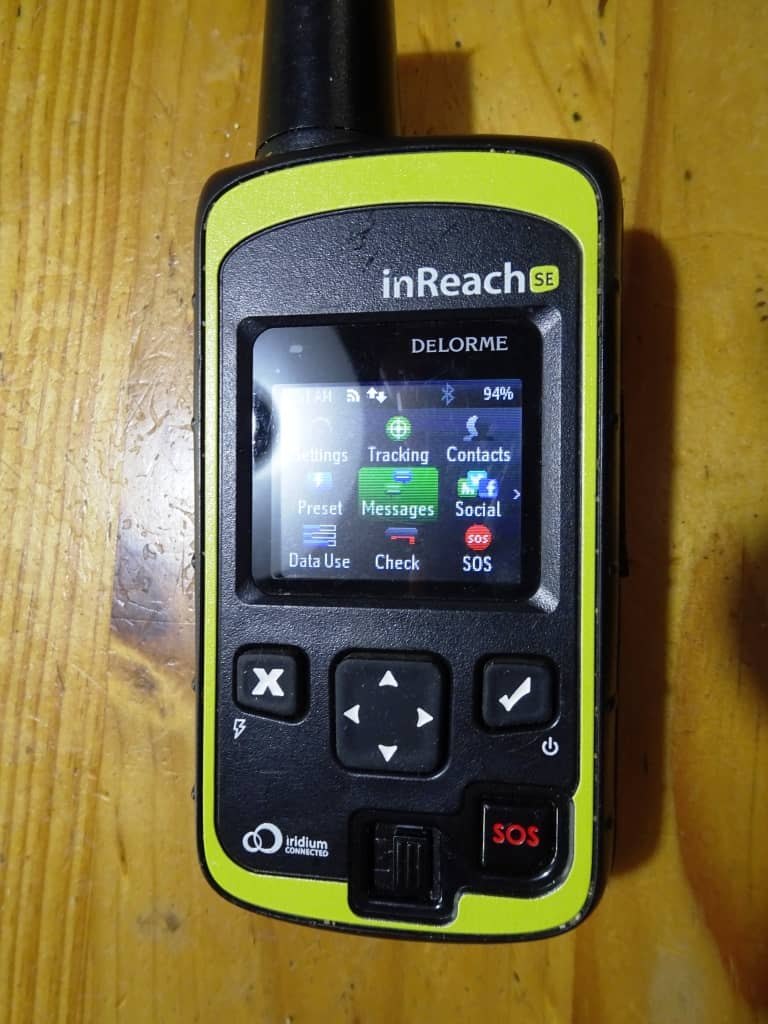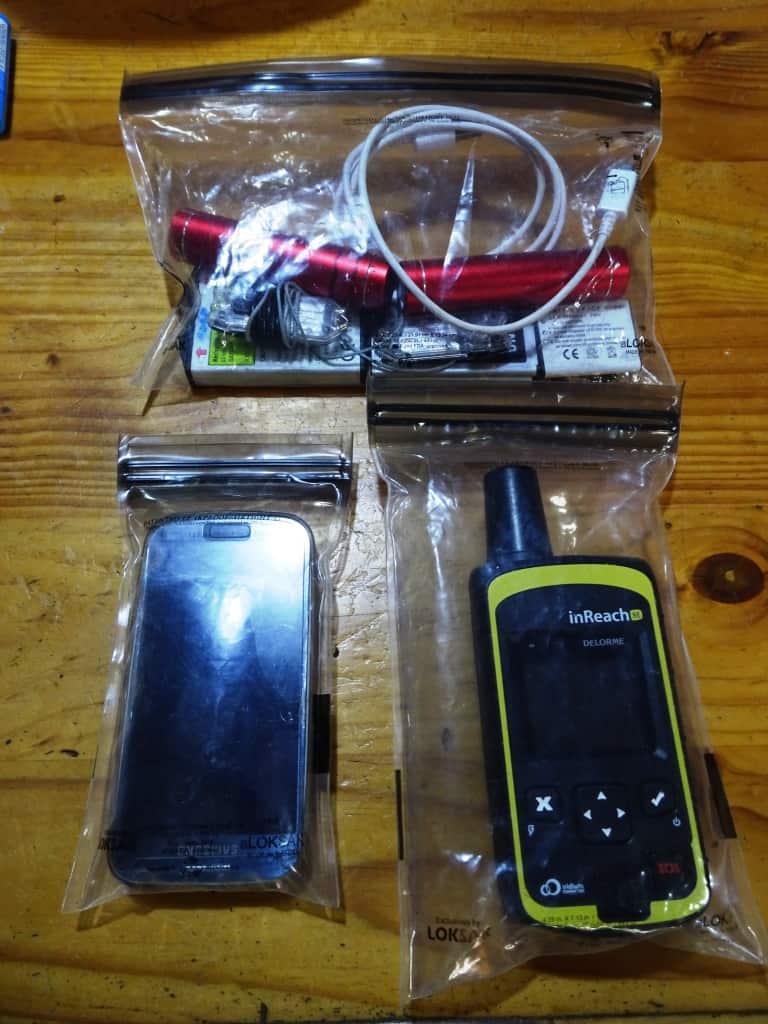Yes this really does work. This is my ‘Poor Man’s Satellite Phone‘ after two weeks at between 3.000-6,000 metres elevation during our recent EBC trek. As you can see still 94% charged. ‘Normally’ such battery devices would be pretty much flat after just one day (even without use) – as I found out on my first time on the EBC back in 2016.
I had 3-4 spare fully charged phone batteries with me that time but when I came to use them they were pretty much totally flat. This had never happened to me before! I guess this is why airlines are now requiring that batteries all be carried in the pressurised section of the aircraft. No doubt as they quickly go flat at low pressure they are a risk of starting a fire.
That time I also had a 5 watt solar charger which was supposed to be charging two 2500 mAh Nicads or Nickel-Metal-Hydrides pretty much all day. The days were perfect sunshine all the time but the batteries just went slowly flatter as they lost charge to the air more quickly than the solar could replace it – something I had never experienced before. Usually this set-up works.

This time I had also left a fully charged battery in my Sat Phone (as well as its spare battery in the Aloksak). The battery in the phone went completely flat (which it does not normally do – it will lose maybe one bar on the display over a period of several weeks without use).
Pretty much everyone who hikes this trail (or that elevation) finds the same phenomenon many blaming it (incorrectly) on the cold – but it was not cold. I wore just a simple light short sleeved wool jersey polo shirt pretty much all day every day and placed all my batteries in my sleeping bag of a night though it never got so cold of a night as I am used to winter camping in the Victorian mountains where my batteries never go unnaturally flat.
I reasoned that it must be the altitude, but Googling it found that no-one had a solution. Extraordinary! First I thought up lots of elaborate ways to place the phone in a space which would emulate sea level air pressure (no doubt dreaming of receiving millions for such a clever invention,,, how to construct such a pressurised bag, hot to pressurise it, how to measure whether it was the correct pressure…) when I realised that Aloksak had already beaten me to it/them!
They make waterproof and airproof zip-lock bags – much superior quality to the supermarket variety (which will not suffice for this purpose – they leak). If you place your phone/battery in the Aloksak bag (they come in a variety of sizes/shapes) and inflate them slightly as you seal them, then place them (gently) in your pocket or pack so that they are under ever such slight pressure all the time the battery/phone just stops going flat. Simple as that – but you can send money if you so desire…
Beware too much pressure or you will burst the bag at the seams. They can be repaired eg with cuben tape (I have). I had two spare camera batteries (I have used many times) in another bag whose seam split (don’t check in the bag your batteries are in at the airport!) They went completely flat overnight. Fortunately I was able to charge the camera up from the two red power bank batteries in the photo below.
A Note on Charging on the EBC: Since I was there three years ago they have installed many micro hydro systems along the trail so that most of the small villages now have A/C power (which must be such a boon for the Sherpas) but it is often not enough to charge any larger battery than the single cell ones I took (in the photo below – 18650 batteries of approx 3.5 amp hours). Sometimes they even struggled to charge these (3400mAh). Be warned.
Another warning: In China (where we changed planes) they have a rule that such rechargeable devices must have the number of Milliamp Hours (or the equivalent) printed on the battery or the case it is in. They confiscated three of my batteries. Other jurisdictions may have similar rules. Fortunately I had also taken my 8 cell power bank (for my tablet – left in Kathmandu) so I was able to take three batteries out of it for the trail.
Aside: Aloksak also make waterproof ‘gun bags’ which are very handy for canoeing/hunting trips: https://www.theultralighthiker.com/2016/11/17/aloksak/
Here in Australia I bought mine from Injinji but Amazon also have them.
A selection of bags below. The two at the bottom are the small and large phone size.

We have now been there three times and plan to return again.
First Published on: Nov 17, 2019
For more about the EBC See:
Surviving the Everest Base Camp Trek
https://www.theultralighthiker.com/2019/12/14/ultralight-hiker-ebc-videos/
https://www.theultralighthiker.com/2019/12/01/ebc-gear-list/
https://www.theultralighthiker.com/2019/11/20/ebc-4-5-and-so-onwards-and-upwards/
https://www.theultralighthiker.com/2019/11/19/dos-and-donts-on-the-ebc-and-elsewhere/
https://www.theultralighthiker.com/2019/11/18/ebc-3-and-onward-to-xanadu/
https://www.theultralighthiker.com/2019/11/17/everest-days-1-2-lukla-to-namche-bazar/
https://www.theultralighthiker.com/2019/11/16/ebc-starting-out-kathmandu-to-lukla/
https://www.theultralighthiker.com/2019/11/15/9-days-trekking-the-ebc/
From my previous trip, see:
http://www.theultralighthiker.com/to-the-roof-of-the-world/
http://www.theultralighthiker.com/i-followed-my-footsteps/
http://www.theultralighthiker.com/i-saw-below-me-that-golden-valley/
http://www.theultralighthiker.com/thatendlessskyway/
http://www.theultralighthiker.com/the-diamond-desert-everest-base-camp-trek-8/
http://www.theultralighthiker.com/everest-base-camp-three-passes-trek/
http://www.theultralighthiker.com/cold-weather-face-masks/
http://www.theultralighthiker.com/my-life-was-wide-and-wild-and-who-can-know-my-heart/
https://www.theultralighthiker.com/2016/12/26/the-diamond-desert-everest-base-camp-trek-8/

pet drink bottles can hold two atmospheres before the cap starts leaking air, it’s a pity electronic devices are too wide to fit through the top
Aloksaks work. No reason to reinvent the wheel. Cheers, Steve.